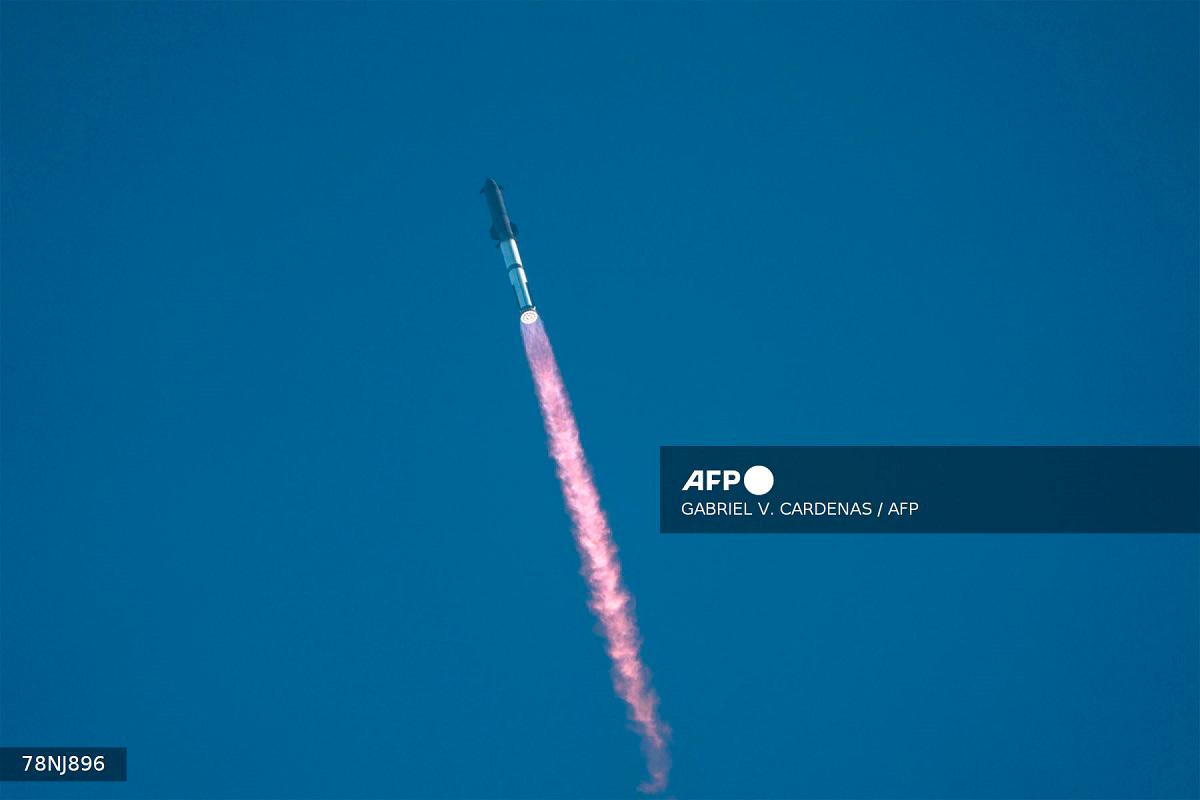SOUTH PADRE ISLAND: SpaceX’s massive Starship rocket soared through Texas’s golden-hour skies before splashing down successfully in a crucial test flight.
The US company conducted this eleventh test voyage to demonstrate progress toward NASA’s lunar projects amid ongoing schedule concerns.
Its enormous rocket took off from SpaceX’s south Texas launch facilities just after 6:25pm local time to resounding applause from engineering teams.
The Super Heavy rocket booster landed in Gulf waters as planned during Monday’s mission.
The upper stage known individually as Starship cruised through space while running through various tests.
It charted a similar path to the company’s last successful mission conducted in August.
Starship blazed into the Indian Ocean a little over an hour post-liftoff after releasing mock satellites.
There was no recovery planned for the vehicle during this test mission.
NASA plans to use the mammoth Starship as the world’s largest and most powerful rocket for returning astronauts to the Moon.
The spacecraft also remains key to Elon Musk’s zealous vision of taking humans to Mars.
The billionaire SpaceX founder said prior to launch he planned to watch outside for a more visceral experience.
Monday’s test mission was expected to be the last for this iteration of Starship prototypes.
SpaceX confirmed the next flight will debut a completely new model called Version 3.
The space technology company can now claim its two most recent flights as clear wins.
Those successes followed a series of spectacular explosions that raised concerns about Starship’s capabilities.
Previous failures created doubts about whether Starship could deliver on its promises within expected timelines.
The US space agency’s Artemis program aims to return humans to the Moon amid Chinese competition.
China forges ahead with a rival space effort targeting 2030 for its first crewed mission.
US President Donald Trump’s administration has piled pressure on NASA to accelerate progress.
Musk’s company holds a multibillion-dollar federal contract to develop Starship as a lunar lander.
The manned Artemis III mission is currently intended for mid-2027 deployment.
NASA’s safety advisory panel has warned the mission could be years late according to Space Policy Online.
Former NASA administrator Jim Bridenstine told a Senate panel the US might not beat China’s timeline.
NASA’s acting administrator Sean Duffy has insisted America will win this second space race.
Duffy dismissed the notion that China could reach the Moon first during recent comments.
Previous Starship tests resulted in upper stage explosions over the Caribbean and in space.
The upper stage also blew up during a ground test conducted back in June.
Musk identified developing a fully reusable orbital heat shield as the toughest technical challenge.
He noted refurbishing the Space Shuttle’s heat shield previously took nine months between flights.
Another major hurdle involves proving Starship can be refueled in orbit with super-cooled propellant.
This essential but untested step remains crucial for the vehicle to conduct deep-space missions.
NASA’s Aerospace Safety Advisory Panel has emphasized threats related to orbital refueling capabilities.
Panel member Paul Hill stated the current timeline appears significantly challenged. – AFP









